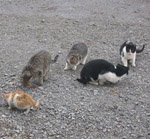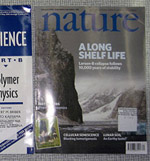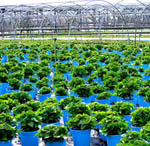The ecological benefits of reduced stream flows
 Fish,
Fish,  Freshwater,
Freshwater,  Invasive,
Invasive,  Restoration
Restoration In the conservation world, conventional wisdom holds that restricting the hydrology of a stream is a bad thing. However, a new article in the journal BioSciences provides a contrarian perspective.
C. Rhett Jackson and Catherine Pringle of the University of Georgia argue that maintaining or reducing river flows can bring ecological benefits in the case of highly disturbed systems. The central theme of their argument is that in highly altered landscapes characterized by alien species, pollution, and conversion of forests to agriculture, reductions in hydrological connectivity can lessen the negative impacts from disturbance. Conversely, restoring stream flow could make the situation worse.
The authors cite a number of examples - a few of which I list below - but I recommend you check out the original article which is currently available online for free.
Protecting endangered species by maintaining levees and reducing peak flows
The researchers acknowledge that reestablishing river-floodplain connectivity by removing levees and providing more natural flood pulses can bring numerous environmental benefits. However they also note that maintaining low hydrological connectivity can help prevent non-native species from impacting native fish such as the case with the endangered Oregon chub (Oregonichthys crameri) in the highly disturbed Willamette Valley.
In addition, novel post-dam riparian vegetation communities that form in the absence of natural flow regimes can provide important habitat for at-risk species such as the endangered southwestern population of the willow flycatcher (Empidonax trailii extimus).
Protecting endangered species by maintaining or creating dams and barriers
Small dams and barriers may protect native fish from problematic introduced species For example, small dams in stream headwaters in the Colorado River basin protect the endangered native greenback cutthroat trout (Oncorhynchus clarki stomias) by preventing nonnative brook trout (Salvelinus fontinalis) from moving upstream. Dams in disturbed systems may also prevent the passage of fish with bioaccumulated toxic chemicals into upstream habitats.
Maintaining stream hydrology to prevent increased transport of pollution and sediment
The researchers warn that in disturbed settings, restoring stream flows may have unintended consequences of increasing sediment and pollution transport with detrimental impacts for wildlife. They cite an example in which restoration efforts in streams in Seattle led to high pre-spawning mortality of coho salmon (Oncorhynchus kisutch), possibly because of exposure to copper pollution. They warn that restoration in urban settings may cause unintended population sinks for at-risk species.
The article provides a number of other examples of the ecological benefits of maintaining or reducing flows in highly disturbed settings. The authors note that restoration in these cases can bring both pros and cons. They write,
"Increasingly, management and restoration strategies are considering the trade-offs associated with further alterations of hydrologic connectivity in intensively developed landscapes…A major challenge is to develop a more predictive understanding of how hydrologic connectivity operates in [these places]"
--Reviewed by Rob Goldstein
Jackson, C., & Pringle, C. (2010). Ecological Benefits of Reduced Hydrologic Connectivity in Intensively Developed Landscapes BioScience, 60 (1), 37-46 DOI: 10.1525/bio.2010.60.1.8




Reader Comments